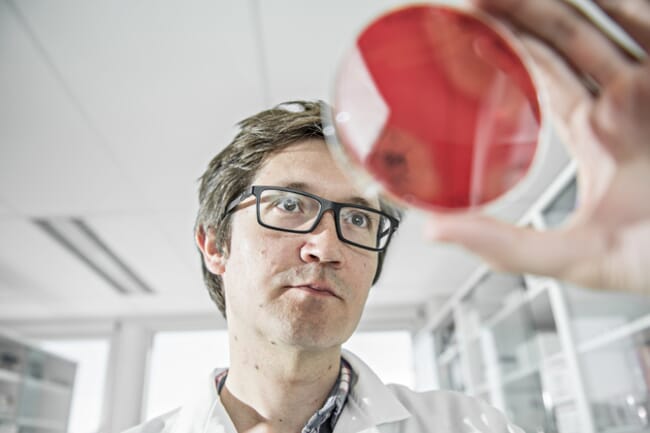
© Jon-Are Berg-Jacobsen, Nofima.
It all started with scientists at Nofima conducting a trial where they fed farmed salmon over a period of time, and measured parameters such as feed utilisation, growth rates and bacterial profile in the intestine, using standard industry method of DNA sequencing.
However, the scientists became suspicious of the bacteria they found in the salmon intestines. Further investigations suggested that the method of DNA sequencing that they had used has its limitations.
In short, what they found was that analyses conducted from sequenced DNA of the intestinal flora do not take into account that microbes found in the intestine may be dead bacteria that come from the fish feed.
The problem is that it has not been common practice – either in Norway or internationally – to analyse the feed when studying the intestinal flora in fish, according to fish health scientist Christian Karlsen and microbe scientist Ida Rud at Nofima.
Karlsen and Rud’s research, which examined 15 feeds in five different studies, was recently published in Nature, under the title: ‘Feed microbiome: confounding factor affecting fish gut microbiome studies’.
“The method, which is a form of deep sequencing, provides many possibilities and can identify thousands of bacteria in a sample, but one must be aware of its limitations,” said Karlsen in a press release.
“There has probably been an assumption that the fish intestine is similar to that of other animals, which have a complex microbiota community in the gut. Therefore, one may not have thought that a few microbes accompanying the feed play a major role,” he added.
Fish intestines seem to have a relatively simple microbial community, where just a few groups of bacteria dominate. However, the raw materials in fish feed contain many nutrients that various microbes are able to utilise. Even if these microbes die during processing, their DNA can be carried by the feed and into the fish’s intestine. For example, lactic acid bacteria, which are often associated with plant-based raw materials.
“The raw materials in fish feed are snacks for microbes,” says Rud.
She believes that the inadequacies of many studies may be due to a very optimistic attitude towards the DNA sequencing method when it arrived.
“We must not indiscriminately transfer methodologies and interpretations from studies on humans and mice to fish,” Rud explains. She believes that scientists still know little about the microbial life in fish intestines.
Karlsen and Rud say that the findings are of great importance for research into aquafeeds.
Time for a change
According to the scientists, anyone intending to conduct feed studies where the mapping of intestinal flora is included must now perform the studies differently.
“From now on, we check DNA sequencing from the gut in relation to the feed that has been used, or sequence microbial RNA to identify the active microbes. We can also combine it with cell cultivation to isolate these microbes,” suggested Rud.
Karlsen and Rud believe that there is a long way to go before we fully understand the role played by intestinal microbes regarding the digestion of feed and their further impact on fish health.



